When is creating an historic district right? Well in my opinion, it is right when the motives are pure, it has community support, and all the potential consequences have been addressed. And in those potential consequences address any effect, if at all on the economic, racial and age diversity of the neighborhood.
The motivation, one would hope that the suggestion of an historic district would come strictly from the desire to preserve examples of a notable architect’s work, unique architecture, or an unique cluster of properties clearly representing a notable time period or movement or event. There are those who would push for a historic district designation for other reasons apart from the desire to preserve anything. They may seek the prestige of being in an historic district, related tax credits, economic development, tourism, or other such things associated with historic districts. They would prostitute History for their own impure lustful desires instead of letting a simple uncorrupt love of History itself dictate the actions.
Note that I used the word ‘unique’ not ‘old’. In many parts of the country a property or community that is at least 50 years old can be called historic. If using that criteria, then possibly ½ of the District could be considered ‘historic’ leaving no room for current and future generations to leave their mark on the city. No, ‘unique’ separates one 100 year old DC townhome from another 100 year old DC townhome, and DC is a city filled with a lot of 50-100+ year old housing stock. There is no need to keep ALL of it, just some of it, preferably the unique ones.
Also, hopefully, by having a more stringent criteria for what qualifies as ‘historic’ will preserve the quality and integrity of the term and not inflate it’s value with inconsequential properties that erode away at the things that help the truly ‘historic’ and unique. Erosions such as abuse of tax credits or gutting of government incentives because the system is overloaded with applicants. Or when faced with a plethora, ‘historic’ options tourists, shoppers, whomever will dismiss the term and it loses its value (remember when the term gourmet, actually meant ‘gourmet’?).
Those other community desires (cache, tourism, economic development) not relating to history need to be addressed on their own, as for many there are other routes, other paths, to those ends. Maybe, even find alternatives to an historic district designation by educating homeowners and developers to value the current housing stock, or choosing specific buildings for landmark status, or focus on other neighborhood attributes for cache or economic development.
Community support, in addition to a district’s uniqueness, also makes a historic district the right thing. For one, these things should not be imposed on a neighborhood as a whole without its consent. As it is the community that monitors and polices the standards. An unsupportive community may undermine the rules, eroding at the whole purpose and the integrity of the historic district designation. Or even if remaining within the rules, violating the spirit, allowing properties to fall into decay and require their destruction, possibly losing something unique.
Another kind of community support that is needed is the one outside of a (proposed) historic district, and that is the local and federal governments and non-profits. These bodies provide support in the way of grants, loans, technical assistance programs, tax incentives, laws, zoning, enforcement, regulations, and at times acting as a gate keeper. These bodies must remain committed to the district by not gutting, abandoning or weakening the programs to the point that they undercut the support system for those living in an historic district.
Lastly, preservationists need to address what effect, if any, their actions may have on the more at risk residents, over the long term. If not acknowledged, a neighborhood could in time lose it’s economic, racial and chronological diversity, creating a homogenous community, lacking in any real diversity. Hopefully in tackling this issue, grants, programs, projects and partnerships can be developed to keep the balance and mitigate possible displacement.
When there is a clear motivation to preserve (not just prevent the non-historic) something unique, and there is support ranging from the ground up to the top, and the community has taken action to deal with the social consequences of engaging in such a venture, then this type of historic preservation is right.
Previous Gentrification and Historic Preservation Posts:
Gentrification and Historic Preservation, pt 1
Gentrification and Historic Preservation, pt 2a: This Old House vs Old House Journal
Gentrification and Historic Preservation pt 2b: This Old House (TOH) vs Old House Journal (OHJ) pt 2b
Gentrification and Historic Preservation, pt 3: When it is right

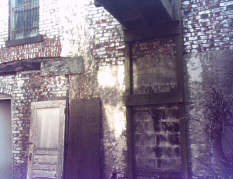 1536 New Jersey Avenue, NW
1536 New Jersey Avenue, NW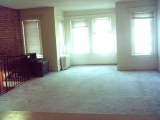 I’d have to say someone started trying to live on the 2nd floor and renovate the rest of the property but clearly was way over their head.
I’d have to say someone started trying to live on the 2nd floor and renovate the rest of the property but clearly was way over their head. 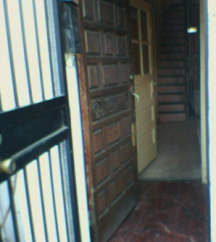
 The floors will need to be ripped up as there is nothing and no part of the floor that can be saved.
The floors will need to be ripped up as there is nothing and no part of the floor that can be saved.
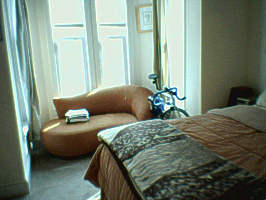
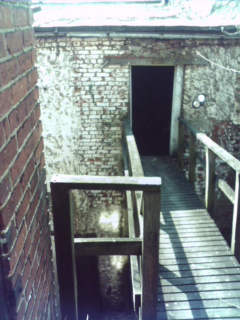 I’ll post the grande weekend house tour later, but I have to talk about 1636 New Jersey Ave, which had it’s open house yesterday. Quick statement about the place, it would be an excellent opportunity for an investor with a lot of time, money, and vision. Or someone with a lot of time and money. What it could be is wonderful, what it is now is crap. The best thing about the place is the ‘ruins’ or the carriage house out back. Wandering inside I could envision a dance space, an artist’s studio, or two huge Hummers (the official car of SATAN). The other neat thing about the carriage house was that it had a loft area and there was this wonderful little bridge that joined the upper part of the carriage house to the 2nd floor of the main house (pictured above, thanks IT). So if you have $429,000 plus the extra $200-300K for renovations these beautiful ruins could be yours.
I’ll post the grande weekend house tour later, but I have to talk about 1636 New Jersey Ave, which had it’s open house yesterday. Quick statement about the place, it would be an excellent opportunity for an investor with a lot of time, money, and vision. Or someone with a lot of time and money. What it could be is wonderful, what it is now is crap. The best thing about the place is the ‘ruins’ or the carriage house out back. Wandering inside I could envision a dance space, an artist’s studio, or two huge Hummers (the official car of SATAN). The other neat thing about the carriage house was that it had a loft area and there was this wonderful little bridge that joined the upper part of the carriage house to the 2nd floor of the main house (pictured above, thanks IT). So if you have $429,000 plus the extra $200-300K for renovations these beautiful ruins could be yours.